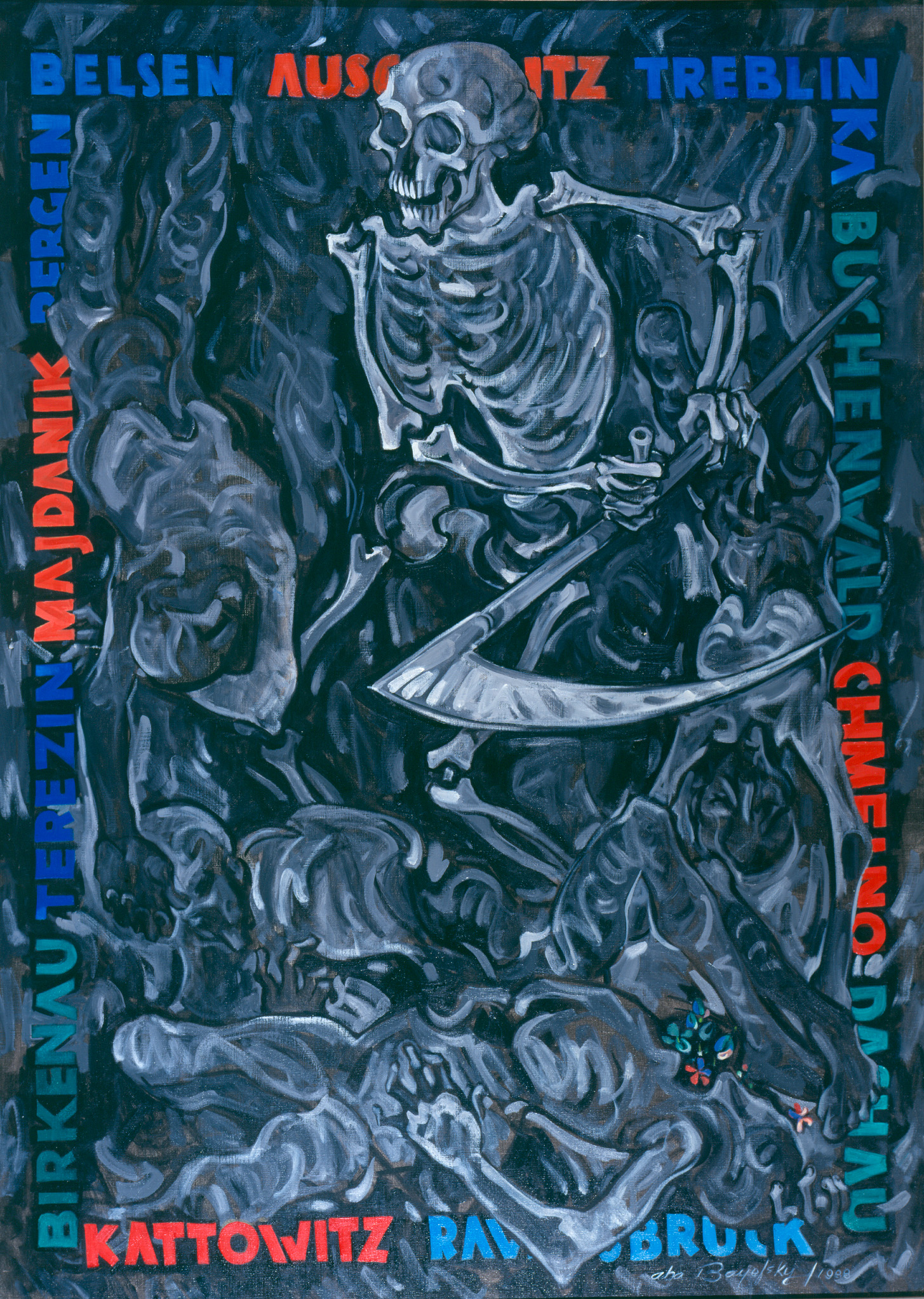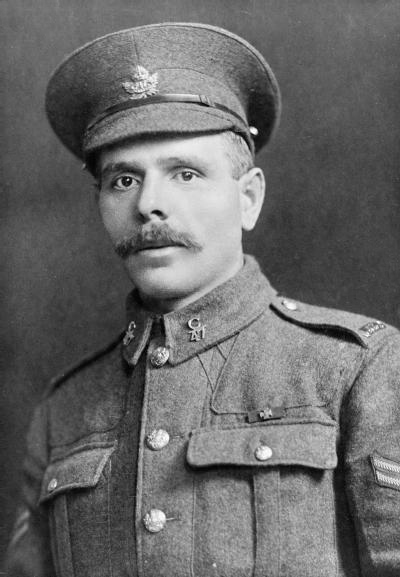Genocide is the intentional destruction of a particular group through killing, serious physical or mental harm, preventing births and/or forcibly transferring children to another group. The Canadian government has formally recognized certain instances of genocide abroad, including the Armenian genocide, the Holodomor, the Holocaust, the Rwandan genocide, the ethnic cleansing in Bosnia, the Uyghur genocide and the Rohingya genocide. Within Canada, some historians, legal scholars and activists have claimed that the historical, intergenerational and present treatment of Indigenous peoples are acts of genocide.

Defining Genocide
Raphäel Lemkin defined the term genocide in 1944. The word combines the Greek “genos” (race or tribe) with the Latin “cide” (killing). Thus, Lemkin coined genocide as the intentional annihilation of a given group based on their shared identity. This identity is often based on nationality or ethnicity, but it can also include race or religious affiliation.
Convention on Genocide
Raphäel Lemkin campaigned for an international convention that would prohibit this crime. In 1948, the United Nations (UN) adopted the Convention on the Prevention and Punishment of the Crime of Genocide, which was based on his work. The Convention states the following:
Article I. The Contracting Parties confirm that genocide, whether committed in time of peace or in time of war, is a crime under international law which they undertake to prevent and to punish.
Article II. In the present Convention, genocide means any of the following acts committed with intent to destroy, in whole or in part, a national, ethnical, racial or religious group, as such:
(a) Killing members of the group;
(b) Causing serious bodily or mental harm to members of the group;
(c) Deliberately inflicting on the group conditions of life calculated to bring about its physical destruction in whole or in part;
(d) Imposing measures intended to prevent births within the group;
(e) Forcibly transferring children of the group to another group.Article III. The following acts shall be punishable:
(a) Genocide;
(b) Conspiracy to commit genocide;
(c) Direct and public incitement to commit genocide;
(d) Attempt to commit genocide;
(e) Complicity in genocide.
Legal scholars and political scientists, amongst others, have wrestled with defining and preventing genocide ever since. When national governments or militaries target certain groups, other governments are often reluctant to intervene. This is because intervention threatens the sovereignty that all states depend on in the current world order.
Recognizing Genocide
The Canadian government has formally recognized certain instances of genocide abroad, including the Armenian genocide, the Holodomor, the Holocaust, the Rwandan genocide, the ethnic cleansing in Bosnia, the Uyghur genocide and the Rohingya genocide. People also debate whether other crimes against humanity, like the transatlantic slave trade, should be recognized as genocide.
Domestically, the term genocide has been used by some to describe atrocities against Indigenous peoples. In 2015, the Truth and Reconciliation Committee labelled the residential school system a case of cultural genocide. In 2019, the national inquiry into missing and murdered Indigenous women and girls used the term “genocide” to characterize the pattern of violence against Indigenous peoples. On 4 June 2019, Prime Minister Justin Trudeau recognized the national inquiry’s conclusions, saying: “we accept the findings of the commissioners that it was genocide.” (See Genocide and Indigenous Peoples in Canada.)
Armenian Genocide
The Armenian Genocide refers to the murder of between 600,000 and 1.2 million Armenians in the Ottoman Empire during the First World War. As the Empire weakened, the “Young Turks” faction pushed the government to target non-Muslim minorities in Turkey. This included Armenian Christians. Between 1915 and 1916, the government targeted elites and leaders for execution. Some men were sent to death camps, while other men, women, and children were abducted or deported. Due to immigration restrictions, only 1,500 Armenian refugees migrated to join family in Canada.
Holodomor
The Holodomor was a man-made famine in 1932–33 that caused nearly 4 million deaths in the Ukraine. The famine was the result of the forced collectivization of farms and requisitioning of food under Soviet leader Joseph Stalin. The regime refused to accept international humanitarian aid or to allow migration while censoring the media and suppressing dissent. Many countries recognize the Holodomor as genocide because they believe it was part of a deliberate Soviet policy against Ukrainian nationalism.
Holocaust
The Holocaust (1933–45) was the systematic murder of 6 million Jews as well as 5 million people from other identifiable groups like the Roma and Sinti, LGBTQ people and Soviet prisoners of war by Nazi Germany. According to Nazi ideology, Jews were subhuman and therefore targeted for complete destruction. Although people fled the violence in Europe, they were often denied refuge by other countries, including Canada. (See MS St Louis.)

(courtesy Department of National Defence/Veterans Affairs Canada)
Rwandan Genocide
Approximately 800,000 Rwandans were killed during the Rwandan Genocide of 1994. At the time, Canadian Major-General Roméo Dallaire led the United Nations Assistance Mission for Rwanda (UNAMIR). UN troops were there to monitor a ceasefire between the Hutu Rwandan regime and the Rwandan Patriotic Front (RPF), a Tutsi rebel militia. The troops were not authorized to use force. On 6 April, an airplane carrying the presidents of Rwanda and Burundi was shot down over Kigali. A campaign followed that violently targeted minority Tutsi and moderate Hutu peoples by Rwandan government forces and Hutu extremists. By mid-July, the RPF had taken control of the capital. (See Canadian Peacekeepers in Rwanda.)
Ethnic Cleansing in Bosnia
During the Bosnian War, UN peacekeepers failed to protect civilians from ethnic cleansing. This was especially the case with those killed during the July 1995 Srebrenica Massacre. About 20,000 Bosnian Muslims (Bosniaks) sought refuge in Srebrenica, which had been declared a “safe area” by the UN in 1993. Despite this, the Serbian army under General Ratko Mladić targeted Bosniaks in Srebrenica. Shortly after its arrival, the army forcibly transported women, children, and the elderly. Eight thousand Bosniak men and boys were taken and executed. (See Canadian Peacekeepers in the Balkans.)
Uyghur Genocide
In 2009, the Uyghur (a mostly Muslim, Turkic people) and the Han (ethnic Chinese) clashed over issues regarding cultural and economic discrimination. The riot resulted in the deaths of about 200 people. The Chinese government cracked down on dissenters, and specifically the Uyghur. It has been estimated that more than one million Uyghur people have been detained in forced labour camps, imprisoned and subjected to torture, religious restrictions and forced sterilization. China denies allegations of human rights abuses in Xinjiang. In February 2021, the Canadian Parliament declared China’s treatment of its Uyghur minority population a genocide.
Rohingya genocide
The Rohingya are a Muslim ethnic minority in Myanmar. A predominantly Buddhist country, Myanmar denies the Rohingya citizenship. In 2017, the Myanmar army targeted Rohingya Muslims, sending hundreds of thousands fleeing their homes. Most sought refuge in Bangladesh. Thousands of Rohingya were killed and at least 288 of their villages were destroyed. In 2018, Canada declared the actions of the Myanmar military against the Rohingya a genocide.
Indigenous Peoples in Canada
Within Canada, historians, legal scholars and activists have questioned whether the historical, intergenerational and present treatment of Indigenous peoples are a form of genocide. The main focus has been the residential school system, which was established to assimilate Indigenous children into Euro-Canadian culture. While the earliest residential facilities were established in New France in the 17th century, the term usually refers to schools established after 1880. In this system, children were taken from their families, communities, and cultures to boarding schools run by churches and sponsored by the Canadian state. Over 150,000 children attended these schools. According to the Truth and Reconciliation Commission (TRC), at least 3,200 Indigenous children died. According to the chair, Justice Murray Sinclair, the number of deaths may be more than 6,000.
In 2015, the TRC released its final report, outlining 94 Calls to Action. It concluded that the residential school system was a form of “cultural genocide.” The TRC also identified the “Sixties Scoop” as part of this cultural genocide against Indigenous peoples. This term describes the removal of Indigenous children from their families and communities and their placement with mainly non-Indigenous foster or adoptive families across the United States and Canada. This process began in 1951 but increased exponentially in the 1960s and continued into the 1990s. According to organizations like the First Nations Child and Family Caring Society, Indigenous children remain overrepresented in the care system. The long-term impact of this process was the loss of cultural identity.
In December 2015, the National Inquiry into Missing and Murdered Indigenous Women and Girls began. This inquiry responded to TRC Call to Action 41. In 2019, the inquiry concluded that the violence against Indigenous women, girls and two-spirit people amounts to genocide. In October 2022, a motion in Parliament that called on the federal government to recognize the residential school system as genocide passed with unanimous consent. (See Genocide and Indigenous Peoples in Canada.)

 Share on Facebook
Share on Facebook Share on X
Share on X Share by Email
Share by Email Share on Google Classroom
Share on Google Classroom





